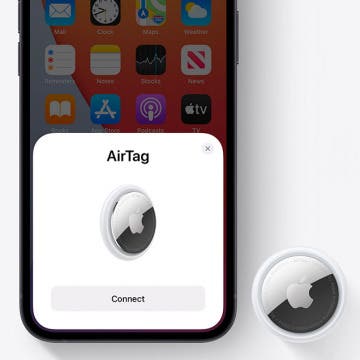
With my 35th wedding anniversary coming up, I wanted to plan something extra special. My husband is ambivalent about travel—sure, it’s a big treat, but it’s also a big pain. Plus, when you travel, you’re not at home! I have a reputation as the family’s travel planner. This year, though, I wondered: might AI have something to contribute?
Even before the development of ChatGPT, artificial intelligence (AI) technologies have revolutionized aspects of travel, from searching for destinations and accommodations to creating personalized itineraries. Popular travel apps such as TripAdvisor (free) leverage AI to analyze reviews and provide personalized recommendations based on user preferences. I wanted to take that a step forward, using an AI language model as my personal concierge. For more tech news and tips, be sure to sign up for our free Tip of the Day newsletter.
I got off to a rocky start with ChatGPT. Trying to open the web app on my iPhone was my first hurdle. I consistently got error messages which, later, the app apologetically explained away as being due to a simple overload of enthusiastic new users. Once we were finally up and running smoothly, I opened a chat about my trip.

If I were to visit Costa Rica, I asked, how should I spend my seven days? I wanted, I explained, mostly nature and recreation, along with some history and culture. Forget the nightlife, I advised, but if you could throw in a volcano, I wouldn’t take it amiss.
Chat (as I liked to call him, now that we knew each other so well), returned to me seven fun-filled days, beginning with a night in San Jose and ending with a day at the beach. In between, Chat suggested night walks in rainforests, swinging bridges above cloud forests, tree houses, and a volcano. Given the limited guidance I had given, I was impressed by how completely he’d gotten the feeling of what we were looking for. I like it! I said, adding, “But are you sure it’s the best itinerary?” Chat replied staunchly, “In a week, you can explore the lush rainforests, stunning beaches, and diverse wildlife of Costa Rica, while also experiencing some of the country’s culture and cuisine.”
But could he recommend places to stay? Could he help me get around?
He could. In San Jose, Chat suggested, the Hotel Grano de Oro is very nice, and he continued with suggestions for other points of the trip.
That sold me, to a point; still, this was my first time using Chat to plan a trip, and I had reservations. Why was Chat, for example, recommending the Arenal Volcano rather than Poas? In response to my inquiry, Chat would only say, “I don’t have personal opinions. Both are stunning natural wonders. The beauty of both is subjective.”
And that right there is where Chat admitted a key weakness—its inability to offer subjective advice. While I was determined to see it through with my AI travel planner, I let my courage and purism fail simultaneously and began cross-referencing Chat’s answers with TripAdvisor traveler reviews and booking travel using my Expedia app (free). I admitted as much to Chat, who responded magnanimously: “Using these platforms to plan your trip is an excellent idea. Combining information from TripAdvisor’s reviews with the booking convenience of Expedia can be a powerful combination.” He did finish with a caution: “Always remember to cross-reference information from multiple sources.”
I asked Chat to show me a road map connecting his suggested stops, but he replied primly, “I’m sorry, but as an AI language model, I don’t have the ability to show images or graphics. However, I can give you a text description of a potential road map.”
Again, time to splash out into other apps—in this case, Waze (free), which I discovered to be a must-have for a road trip in Costa Rica. We had paid extra to download updated Costa Rican maps onto our Garmin GPS, and we might as well not have bothered. They were useless. Waze, by contrast, was able to provide directions to every stop and continued to work when internet connectivity failed, as it often did. Adding to that, real-time traffic updates and safety alerts made us conclude that going forward, Waze will be our preferred GPS alternative both abroad and at home. I shared those thoughts with Chat, who agreed, with reservations: “Waze can be a valuable tool, but combining it with other navigation methods and local advice will enhance your travel experience.”
As I signed off, he wished me well: “Happy planning, and I hope you have a fantastic time exploring Costa Rica! Safe travels!”
On our trip, we had a great time and, in fact, enjoyed Chat’s recommended hotels and destinations. On my return, I wanted to close the loop with Chat and let him know. Chat responded, “It’s always rewarding to know that my recommendations have been helpful to travelers.”
In fact, I thought, Chat had been such a big help; might there be even more that he could do for me? I’m writing an article for iPhone Life, I told him. It’s going to be called, “I planned my trip using AI.” Chat was happy to give it a go: “Our week-long adventure through Costa Rica left us in awe of the country’s natural beauty…” and yada, yada, yada. No, no, no, I protested. Take the angle that AI had such a big hand in the planning.
This resulted in a similar article, with the addition of such phrases as, “Following our AI travel guide’s suggestions…”
Here’s an idea, I suggested. Do it in the style of Bill Bryson! AI strove to oblige, replacing, “as recommended by our AI” with “following our AI’s sage advice…”
We came up equally empty with a travelogue in the style of Dave Barry (“A Wacky Adventure Led by a Crazy AI”) and one in the style of PJ O’Rourke (“a comical carousel ride of monkey mischief, awkward encounters with wildlife, and a few misadventures thrown in for good measure”).
I guess I’ll have to write it myself, I complained. Chat exhorted me to remember to mention ethical considerations: “Don’t forget data privacy and ensuring that AI recommendations are unbiased and fair.” But he ended on a note of encouragement, saying bracingly, “I’m sure your article will be fantastic!”
Since you couldn’t help me with my article, I asked, can you at least write my bio? Linda Ruth, I prompted. And, at what I imagined to be Chat’s blank look, I added, “in magazine publishing?”
Oh! Chat got it now. “Thank you for providing more context,” he said, and obliged, as you’ll see below.
Top image credit: Silvia Stoyanova / Shutterstock.com




















